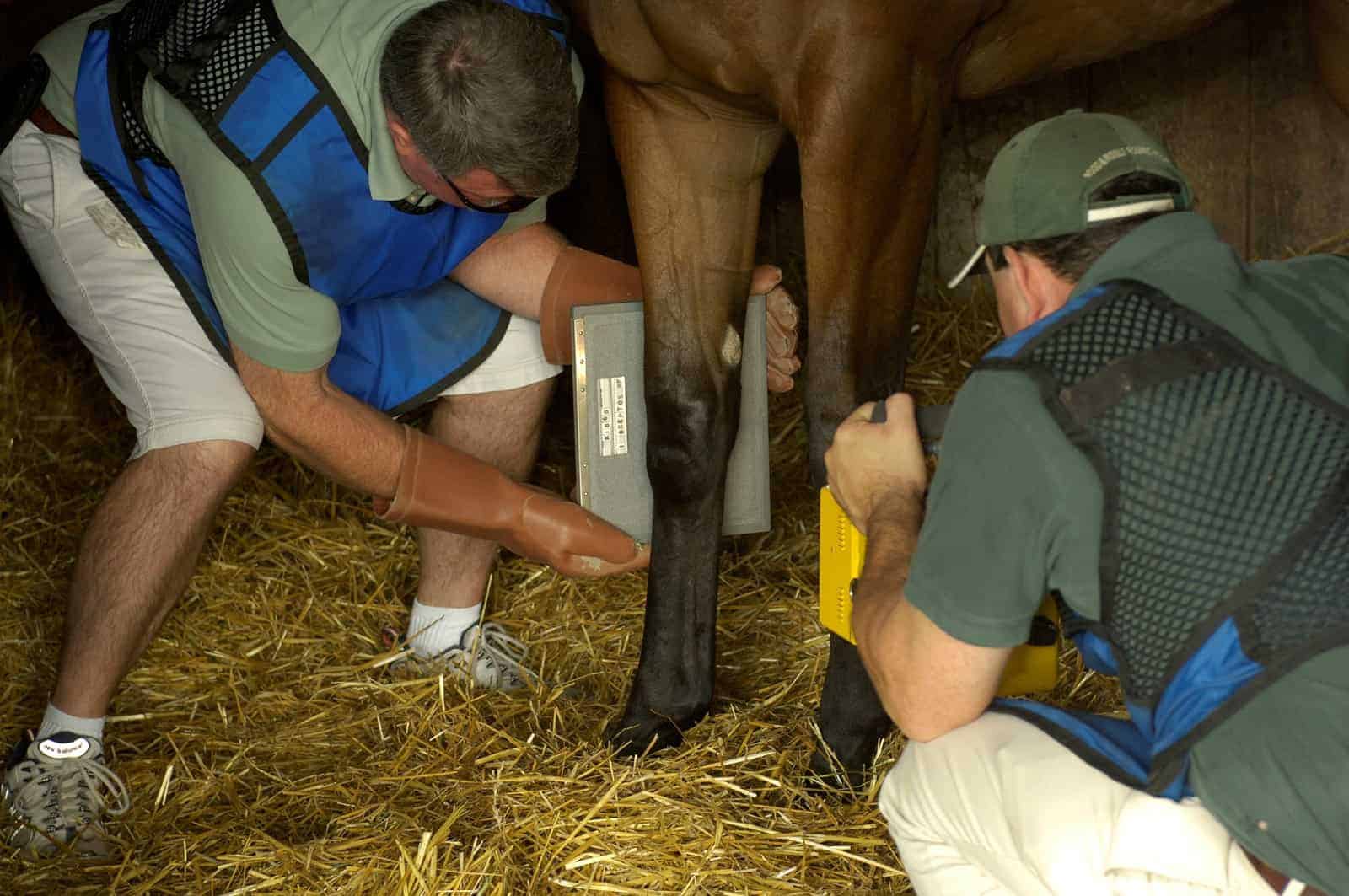Fixing Horse Splint Bone Fractures With Absorbable Screws

Fractures in the proximal (upper) third of splint bones, close to the knee, can be career-ending injuries without treatment, but even fixation with metal implants to hold the bone in place isn’t a surefire fix. Metal screws have issues of their own, sometimes hindering healing and interfering with future diagnostic imaging. Fortunately, though, veterinarians have a new treatment method at their disposal. A recent study has shown that fractured splint bone healing can be optimized by replacing metal screws with absorbable ones.
“Bioabsorbable screws appear significantly more biocompatible with the natural tissues than metallic screws,” said Mahmoud Mageed, DrMedVet, of Tierklinik Lüsche GmbH Equine Hospital, in Bakum‐Lüsche, Germany.
Another advantage, Mageed said, is that the horse’s body does, in fact, absorb the screw material. As a result, the screw would likely not need to be removed via a second surgery, as is often the case with metal screws
Create a free account with TheHorse.com to view this content.
TheHorse.com is home to thousands of free articles about horse health care. In order to access some of our exclusive free content, you must be signed into TheHorse.com.
Start your free account today!
Already have an account?
and continue reading.

Written by:
Christa Lesté-Lasserre, MA
Related Articles
Stay on top of the most recent Horse Health news with















